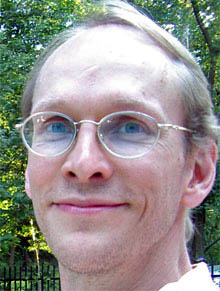Dr. Preston W. “Pete” Estep III
Preston W. “Pete” Estep III, Ph.D. is the CEO and Chief Scientific Officer of TeloMe, Inc., a telomere analysis and engineering biotech company he cofounded with Professor George Church of Harvard Medical School, and head of the Personal Genome Project (PGP). He is also a cofounder and former CEO of the longevity research biotechnology company Longenity, Inc. Pete also is an adviser to the PGP, an “open-source” genome project based at Harvard Medical School. He is an inventor of several technologies including telomere analysis technologies, DNA chip-based readout of transposon-based selections, and universal DNA protein-binding microarrays (PBMs).
Pete is a graduate of Cornell University, where he earned a B.S. degree and performed neuroscience research as a Howard Hughes Medical Institute undergraduate scholar. He earned a Ph.D. in Genetics from Harvard Medical School performing research in Professor Church’s laboratory. He has founded and advised multiple technology startup companies and organizations.
He also is an active proponent of cognitive enhancement and is the former Chairman of The InnerSpace Foundation (IF), a nonprofit organization dedicated to promoting and funding neuroengineering approaches for the dramatic enhancement of memory and learning
Pete authored The Evidence-based Pursuit of Radical Life Extension [in Religion and the Implications of Radical Life Extension (2009) September; Derek F. Maher, Ph.D.; Calvin Mercer, Ph.D., Editors], The Promise of Human Lifespan Extension and Many factors modify the physiological response to sugary liquids, and coauthored Selection analyses of insertional mutants using subgenic-resolution arrays, Compact, universal DNA microarrays to comprehensively determine transcription-factor binding site specificities, Computational identification of Cis-regulatory elements associated with groups of functionally related genes in Saccharomyces cerevisiae, The Isw2 Chromatin Remodeling Complex Represses Early Meiotic Genes upon Recruitment by Ume6p, and Finding DNA regulatory motifs within unaligned noncoding sequences clustered by whole-genome mRNA quantitation.
His patents include Methods of assaying physiological states and Space efficient polymer sets.
